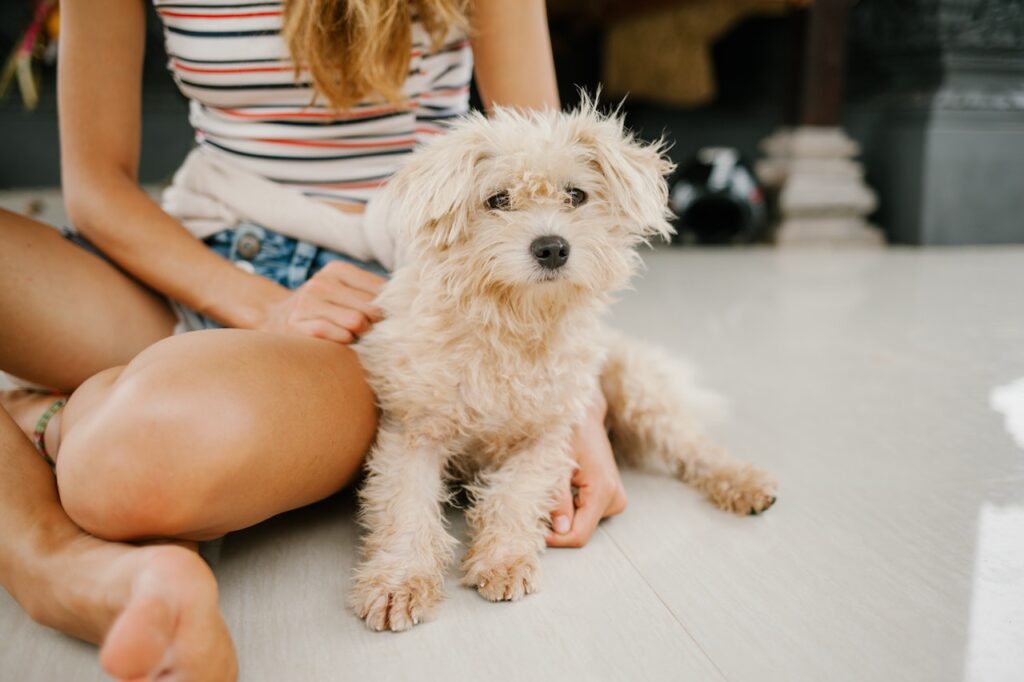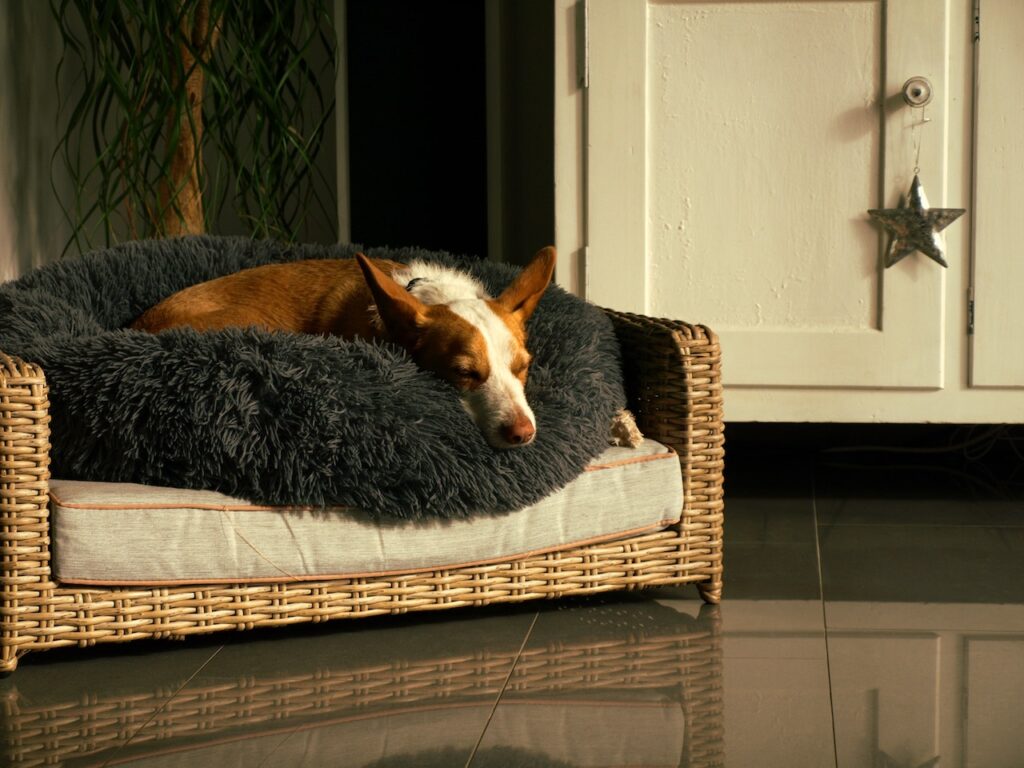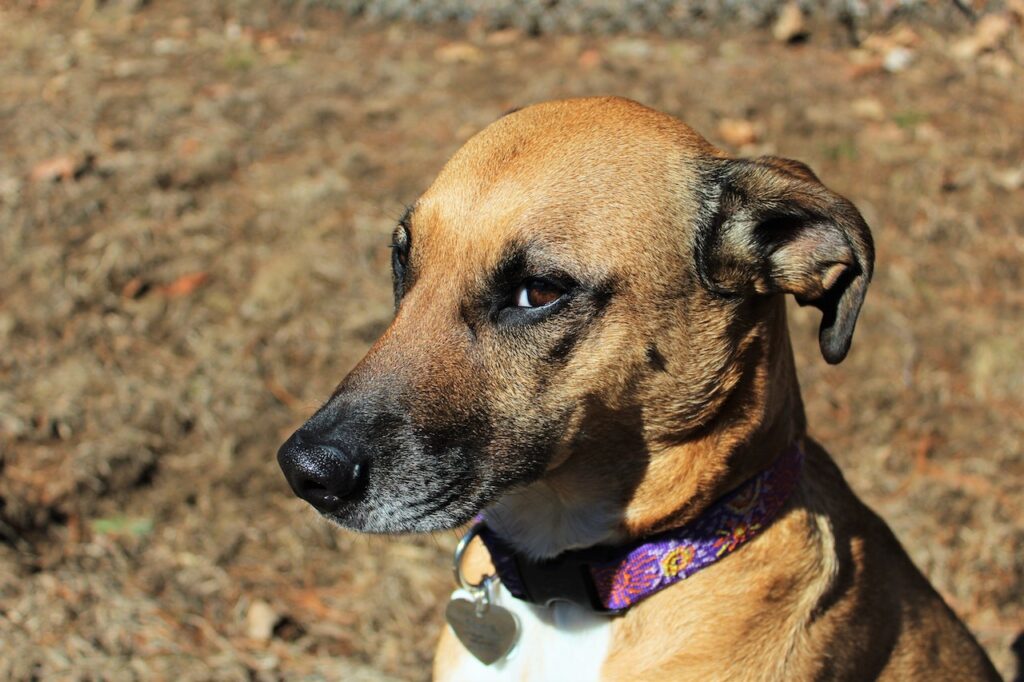A step-by-step guide to successful puppy toilet training
Bringing a new puppy into your home is an exciting and happy occasion. As you welcome this furry bundle of energy and love, it’s important to lay the foundation and establish good habits from the start. One of the most crucial aspects of puppy ownership is toilet training. Teaching your puppy where and when to toilet is not only essential for maintaining a clean and hygienic home environment but it also promotes a harmonious relationship and increases the bond between you and your new puppy dog friend.
Toilet training a puppy or any new dog coming into your home requires patience, consistency and a clear understanding of the process. So whether you want to have your puppy toilet outdoors in a garden, a yard or indoors on puppy pads. By establishing a routine and consistently positively reinforcing desired behaviours, you can guide your puppy towards success.
In this comprehensive guide we will take you through a step-by-step journey of puppy toilet training, providing valuable insights, practical trouble shooting tips and effective positive reinforcement strategies to ensure success. Plus we highlight some useful and relevant product links.
The tools needed to toilet train a puppy
The Importance of Consistency
Consistency is key in puppy toilet training. Dogs thrive on routine and by providing a consistent schedule for toilet breaks, feeding and exercise, you set clear expectations for your puppy. Consistency also extends to the use of commands, rewards and reinforcement techniques. When your puppy consistently experiences positive outcomes for appropriate toileting behaviours, they will quickly learn what is expected of them.
Positive Reinforcement
Positive reinforcement is a powerful tool in toilet training your puppy. This technique involves rewarding your puppy with praise, treats or playtime immediately after they successfully pee or poop in the designated area. Positive reinforcement not only motivates your puppy to repeat the desired behaviour but also strengthens the bond between you and your puppy.
Patience and Persistence
Toilet training takes time and patience. Remember that accidents are a natural part of the learning process, especially in the early stages. It’s important to remain patient and avoid punishment, as this can create fear and anxiety in your puppy, hindering their progress. Consistent training, coupled with positive reinforcement, will get the best results over time.
Establishing a Designated Toilet Area
Creating a designated toilet area is crucial in teaching your puppy where it is appropriate to potty. Whether you choose an outdoor spot in your garden or designate a specific indoor area with puppy pads, consistency is key. Introduce scent cues, such as soiled puppy pad to help your puppy associate the scent with toileting. Gradually move the scent cues closer to the designated toilet area to reinforce the desired behaviour.
When choosing a puppy pad it’s important you pick good value pads that are super absorbent, anti slip with leak resistant mats to prevent pee leaking onto the floor underneath. We have selected a pad that can be bought in packs of 50 and has an odour neutraliser to keep your home smelling clean whilst you are house training your puppy. Take a look at them by clicking here.
Setting a Toilet Training Schedule
Establishing a toilet training schedule is essential for success. Puppies have small bladders and need frequent opportunities to wee. Set a schedule that includes regular toilet breaks after meals, playtime, naps, waking up in the morning and before bedtime. By adhering to a consistent schedule, you set your puppy up for success and minimize the chances of accidents.
Recognizing and Responding to Elimination Cues
Learning to recognize your puppy’s elimination (the need to wee or poo) cues is vital in preventing accidents and facilitating successful toilet training. Watch for signs such as sniffing, circling, restlessness or sudden pauses in play. When you observe these cues, promptly take your puppy to the designated toilet area, either outdoors or to the designated spot indoors, to encourage elimination.
Dealing with Accidents
Accidents are bound to happen during the toilet training process. When accidents occur, it’s crucial to remain calm and avoid punishment. Punishment can create fear and confusion in your puppy, making the training process more challenging. Instead, focus on cleaning accidents thoroughly with enzymatic cleaners to remove odours and prevent your puppy from repeatedly going in that spot because of the scent cues left from the accident.
Our favourite Stain and Odour Remover Spray is an organic product with a powerful cleaning action. It can be used on carpets, fabrics and flooring using a powerful formula to get rid of tough stains and odours. It is safe to use around puppies and children as it’s non toxic and use an enzymatic action to eliminate the source of the odour. Click here to take a closer look.
Supervision and Confinement
When you cannot directly watch your puppy, use a crate or playpen to confine them to a small area. This will prevent accidents and allow you to monitor their behaviour closely. Please don’t leave your puppy un-supervised for any length of time if there is a chance they could escape their playpen and find themselves lost and even worst in danger. When using a puppy crate it is really important that they are crate trained so they are comfortable and used to the environment, we will cover the topic of crate training in a another blog coming soon.
Play Pen | Foldable and ideal for indoor and outdoor. Available in 3 sizes, this play pen can be transformed in different shapes to match your space. When not in use it is easy to fold flat. |
Puppy Crate | Available in different sizes. Easy to set up and has a waterproof bottom tray that is easy to remove and wipe clean. With two doors, double locks and rubber feet. |
Toubleshooting Common Puppy Toilet Training Problems
Toilet training a puppy can sometimes present challenges along the way. Understanding common issues and implementing appropriate solutions will help you overcome these hurdles and maintain progress in your puppy’s training. Here are some common puppy toilet training problems and troubleshooting tips to address them…
Inconsistent Elimination
If your puppy eliminates in different areas of the house instead of the designated toilet area, it may be due to inconsistent supervision or unclear communication. Ensure you closely supervise your puppy, especially during the early stages of training. Use consistent commands and reward systems to reinforce the desired behaviour. Consider limiting access to certain areas of the house until your puppy consistently eliminates in the designated area.
Reluctance to Use Puppy Pads
If you’re using puppy pads indoors as a temporary or permanent toileting solution, some puppies may initially be reluctant to use them. Ensure the puppy pads are easily accessible and placed in an area where your puppy spends most of their time. Encourage your puppy to use the pads by placing them on the pads when you notice elimination cues. Consistently reward and praise your puppy for using the pads.
Difficulty Transitioning to Outdoor Toileting
If you’re transitioning your puppy from using puppy pads indoors to eliminating outdoors, it may take time for them to make the switch. Gradually move the puppy pads closer to the door leading to the outdoor toilet area. Once your puppy consistently uses the pads near the door, start taking them outside to the designated toilet area. Reward and praise your puppy for eliminating outdoors to reinforce the desired behaviour.
Submissive or Excitement Urination
Some puppies may exhibit submissive or excitement urination, which can be mistaken for house soiling. Submissive urination usually occurs when your puppy is scared, anxious, or trying to appease you or other family members. Excitement urination happens when your puppy gets overly excited or during greetings. To address these issues, avoid any actions or situations that trigger submissive or excitement urination. Provide a calm and predictable environment for your puppy, and gradually expose them to new experiences to build confidence.
The benefits of positive reinforcement when toilet training a puppy
Positive reinforcement is the key to successful puppy toilet training because it helps establish a strong bond between you and your puppy, motivates them to repeat desired behaviours and creates a positive association with the toileting process. Here’s why positive reinforcement is highly effective…
Builds Trust and Bond
Positive reinforcement techniques, such as praise, treats, and rewards, create a positive and trusting relationship between you and your puppy. When you reward your puppy for toileting in the appropriate spot, they associate the behaviour with your approval and feel more inclined to repeat it. This strengthens the bond between you and your puppy, making them more receptive to your training efforts.
Focuses on Desired Behaviour
Positive reinforcement allows you to shift your puppy’s focus onto the desired behaviour, which is to go to the toilet in the designated area. Instead of punishing or scolding them for accidents, you redirect their attention to the correct behaviour. By consistently rewarding and praising your puppy for toileting in the right spot, you communicate what you expect from them and encourage them to repeat the behaviour.
Increases Motivation
Most dogs, including puppies, are naturally motivated by rewards. When you provide positive reinforcement during toilet training, such as offering treats, verbal praise or playtime, your puppy becomes motivated to please you and earn the rewards. This motivation drives them to understand the desired behaviour.
Creates Positive Association
Positive reinforcement creates a positive association with the toileting process and the designated toilet area. When your puppy receives rewards and praise for eliminating in the right spot, they associate that location and the act of going to the toilet with positive experiences. This association encourages them to seek out and use the designated area for toileting, making the training process more effective and efficient.
Reduces Fear and Anxiety
Punishment-based techniques, such as scolding or physical correction, can create fear, anxiety and stress in puppies. This can hinder their learning process and negatively impact their overall well-being. Positive reinforcement, on the other hand, promotes a safe and supportive environment for your puppy. They learn that elimination is a normal and positive part of their routine, reducing any fear or anxiety associated with the toileting process.
By utilizing positive reinforcement techniques, you set your puppy up for success in their toilet training journey. Remember to be consistent, patient, and use rewards that are meaningful to your puppy. With time and positive reinforcement, your puppy will develop good toileting habits and become a well-trained and happy dog friend.
latest articles
Lorem ipsum dolor sit amet, consectetur adipiscing elit. Ut elit tellus, luctus nec ullamcorper mattis, pulvinar dapibus leo.








